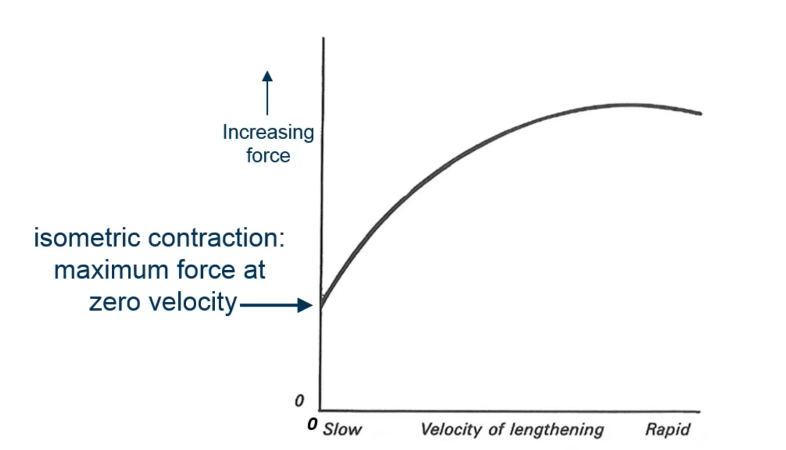7) Excitation Contraction Coupling, Types of Muscular Contraction and Force-velocity Properties Part 2
1/18
There's no tags or description
Looks like no tags are added yet.
Name | Mastery | Learn | Test | Matching | Spaced |
|---|
No study sessions yet.
19 Terms
Which of the following best describes a concentric muscle contraction?
Muscle shortens when its contractile force exceeds opposing resistance
In an eccentric contraction, which of the following is true?
Muscle is stretched as its contractile effort is less than opposing resistance
What is the primary characteristic of an isometric contraction?
Muscle length remains constant despite active force generation
During a controlled lowering of a dumbbell at the elbow, the biceps brachii is:
In an eccentric contraction, actively lengthening against gravity
Which contraction type is demonstrated when holding the knee at a fixed angle against gravity?
Isometric contraction of the biceps femoris
When stepping up, the hip and knee extensors primarily perform:
Concentric contractions to generate upward force
During stepping down, the gluteal and quadriceps muscles experience:
Eccentric contractions as they resist gravitational descent
According to the force-velocity relationship, a muscle:
Generates less force at higher shortening velocities
Which of the following correctly matches force capability with contraction type?
Eccentric – force increases with rapid but small stretches
n the combined force-velocity graph, where is the maximum active force observed?
At zero velocity, corresponding to isometric contraction
Which muscle action functions as a braking system during movement?
Eccentric contraction of extensors during limb lowering
What is the approximate safe range of muscle length change during contraction?
Approximately 10% of muscle’s resting length
Which of the following statements about eccentric contractions is correct?
Muscle generates more resistive force with rapid lengthening
When lifting a dumbbell during an elbow flexion exercise, the triceps brachii is likely:
Relaxed and passively lengthened
Which condition would result in near-zero force production?
Rapid concentric contraction at maximum shortening velocity

What type of contraction
Concentric

What type of contraction
Essentric